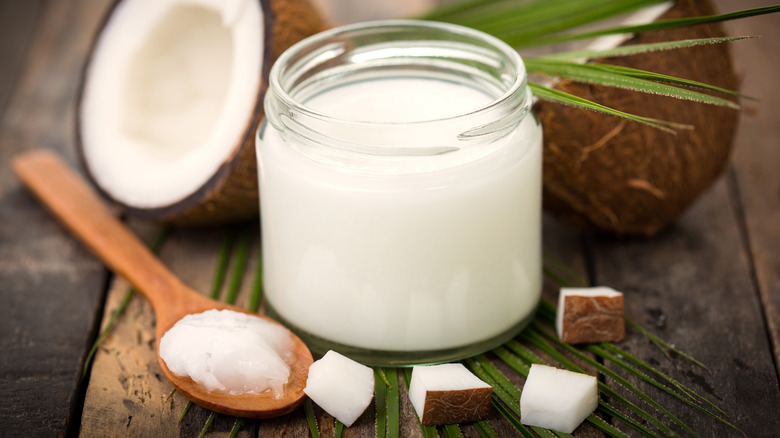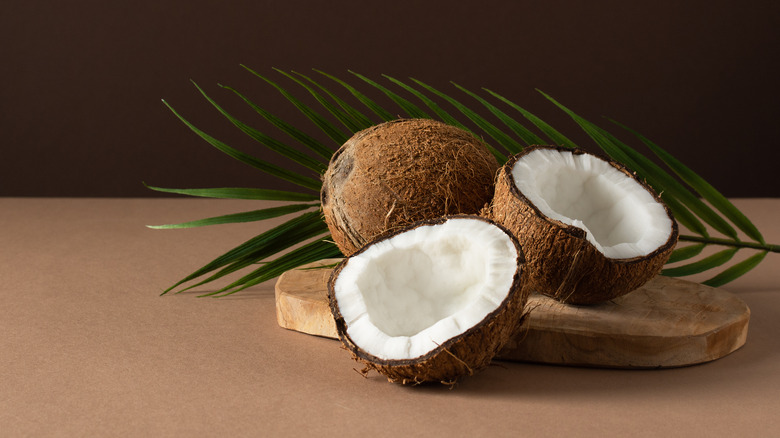Why You Shouldn't Forget To Shake Your Canned Coconut Milk
Coconut milk is a beautiful thing: This dense, creamy, non-dairy liquid full of naturally sweet coconut flavor enriches our soups, stews, curries, and even braised beef ribs. If you've just made your first Thai red curry paste and are about to finish the dish with a can of delicious coconut milk, be sure to give it a vigorous shake before opening — especially if you mean to cut one of those triangular holes in the top of the can in order to pour the liquid out. This is because canned coconut milk, which doesn't contain a stabilizer, will naturally separate; the fatty part will rise to the top of the can and form a solid white seal. You can either shake it up before opening, give it a gentle stir after removing the lid, or pour it into the dish and stir to reincorporate the coconut fat and water. Honestly, it's best to shake that sucker. There's something deeply satisfying about feeling coconut milk reincorporate in the can.
This kind of separation is completely natural and doesn't mean your coconut milk has gone off. Coconut milk is simply an emulsion of the fruit's fatty white meat and water, and thus inherently unstable: the fat will want to separate. As you might imagine, the higher the fat content (think regular versus "lite"), the more will rise to the top. Sometimes, but not always, a stabilizing agent such as guar gum is added to the emulsion to prevent this separation.
Milk, cream, and canned
You can buy stuff called coconut cream, which contains only the fatty solids that rise to the top of cans of coconut milk. This comes in handy if, for example, you want to finish a South Indian korma with concentrated coconut flavor but don't need to add more liquid to the sauce. Generally speaking — and especially in baking applications — coconut milk and coconut cream are not interchangeable simply because of the huge difference in water volume; what you'll gain in flavor, you'll absolutely lose in hydration levels.
Is it possible to make coconut milk from scratch at home? Absolutely, as long as you're willing to endure the challenge of draining the (utterly delicious) water inside the shell, cracking the coconut open without incurring either injury or property damage, peeling off the brown skin from the white meat, then blending the prepped coconut with water and straining. While this might have its own survivalist pleasures, we happily recommend buying a high-quality can of organic coconut milk from your favorite grocer and shaking it like a Polaroid picture — at least right before you're ready to use it.

